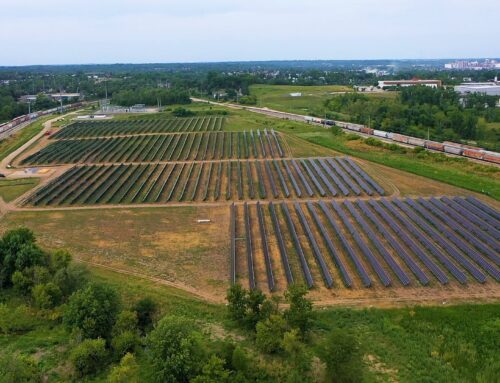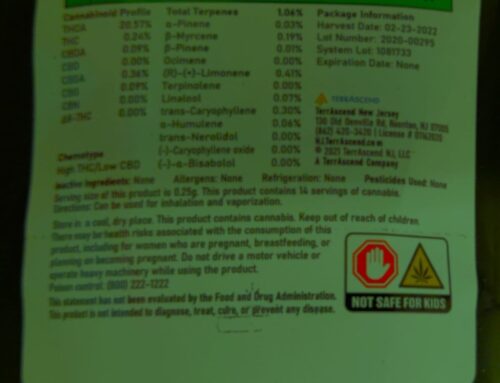Wisconsin ‘froggers’ search by night for sounds of spring
May 1, 2025
One night many summers ago, a very pregnant Darice Brumm stood alone outside her car on a country road — far enough from Madison where the cars are seldom heard, the stars are bright and the sounds of nature are loud.
Brumm took note of the sounds, wind speeds and water temperatures up until a police officer stopped by to inquire about her activities. She warned the officer he wouldn’t believe her and then confessed, “I’m out counting frogs.”
As Brumm recalls, the stunned officer replied, “Yeah, you’re right. You got me.”
For over three decades, Brumm has ventured out every spring and summer to count a portion of Wisconsin’s frog and toad population by listening to its calls. Each time, she and longtime friend Karen Etter Hale stop at 10 locations in Lake Mills for three nights from dusk to midnight.
The pair is among roughly 400 formal volunteers statewide who participate in the Wisconsin Frog and Toad Survey, a long-running study organized by the state Department of Natural Resources to gauge amphibian populations and environmental health.
Wisconsin is home to 11 frog and one toad species. After listening for five minutes at a designated site, volunteers estimate the size of each species on a scale of one to three. A few ribbits will earn the lowest rank. A loud chorus of frogs will earn the highest.
Before learning the calls of each species and which frogs come out during which months, Brumm attributed most sounds to crickets.
“I was totally oblivious,” she said. “I had no idea all this was going on around me.”
Brumm can now recognize a pickerel frog’s moo-like nasal snore or the call of a boreal chorus frog that sounds like running a fingernail over a fine-tooth comb.
Two volunteers on average are assigned to each of the DNR’s 200 routes for surveying frogs and toads statewide. Another DNR-run frog phenology survey relies on over 100 people to help survey wetlands near their properties about once or twice a week during the breeding season. The purpose is to understand how breeding patterns change due to factors like climate change.
“We want to know how a warming world is impacting our amphibians,” said Andrew Badje, a DNR conservation biologist who oversees the surveys.
The DNR launched the Wisconsin Frog and Toad Survey in 1981 following suspected declines in the population. Three years later, the agency began its citizen-based monitoring program, and not long after, Brumm and Hale joined the coalition of listeners known affectionately as “froggers.”
Badje said wildlife surveys of this kind stretch back to the 1950s and 1970s. Around this period, more people and government authorities were growing concerned about the health of wildlife species, leading up to passage of the Endangered Species Act in 1973.
But other states eventually stopped frog survey programs, Badje said. Michigan’s program — modeled after Wisconsin’s — was paused two years ago. The Badger State now maintains the longest-running frog and toad survey in North America.
“We have a group in Wisconsin that’s really dedicated to keeping these going for as long as we physically can,” Badje said.
Without its volunteers, the state DNR would have to hire 30-40 employees to keep up the work, he estimated.
Among Wisconsin’s frog and toad species, one is endangered and two are of special concern. The survey helps equip the DNR with more information about population trends, breeding patterns and habitat. Changes can signal threats to broader environmental health like reduced water quality.
The decades-long survey shows a population recovery in the state for the American bullfrog, which was historically overharvested for foods like frog legs until the enactment of bullfrog possession limits.
The survey has also shown population declines. The northern leopard frog once occupied 30-40% of Wisconsin wetlands, Badje said. Froggers now estimate the species inhabits about 20% of wetlands in the state.
“That’s where the magic comes in with this project,” Badje said. “It’s more than just the DNR using volunteers as a workhorse. It’s a great way to get people involved and more in tune with broad conservation. It’s a great education opportunity, but it’s also a way to connect people back to the environment, especially in cases where someone may not have grown up next to nature.”
Getting back to nature was Jeff Craig’s goal. He became a frogger in 2017 after his partner, Dominique Brossard, suggested citizen science projects could follow his years of teaching high school science. Craig now participates in many DNR programs, including the frog and toad survey, the mink frog survey and large carnivore tracking.
Craig goes the extra mile for the frog survey, though. A certified master naturalist, he surveys with a headlamp and knee-high waterproof boots through muddy, marshy habitats. While most froggers listen on the side of roads like Brumm, Craig ventures into wetlands to snap photos of the frogs. He wants to put a face to sounds.
Craig surveys more counties than a typical frogger, too. He camps in Vilas County in the Northwoods to study the day-calling mink frog, his favorite species. These frogs sound like “horses walking over a cobblestone street,” he described.
He keeps doing frog surveys each year because it underscores how humans impact the environment, he said.
The DNR launched its mink frog survey about a decade ago to catalogue the species’ shift north because of climate change. Froggers are needed because the shift is expected to be gradual.
“It’s not going to be as dynamic as with a bird, because birds can fly away,” Badje said, referencing the state’s decline of the Connecticut warbler. “And frogs can’t exactly fly away.”
Craig has reported in surveys how weather fluctuations can affect Wisconsin’s frogs.
“This year, there’s hardly any snow melt,” Craig said. “So I can cross my fingers we have some big downpours to create some ephemeral ponds for the frogs, so they have more areas to mate and lay their eggs.”
He has observed differences in the population at a county highway’s ditch, for example.
“(One year) it’s thigh-high in water, and there are hundreds of frogs in that water-filled ditch, calling like crazy and mating. It’s this cacophony of sound,” he said. “Next year, completely dry ditch and no frogs. So I’ve seen a lot more fluctuation in the seven years I’ve been doing this.”
Yet, the contributions of the hundreds of froggers make Craig hopeful.
“The public learns from the tiny amount of data that I contribute,” he said. “Without (the survey), we wouldn’t know as much about these special, sensitive species.”
He is grateful the DNR’s programs provide an understanding of where habitats are.
“(Without them) we would just pave over everything,” he said.
Search
RECENT PRESS RELEASES
Related Post




